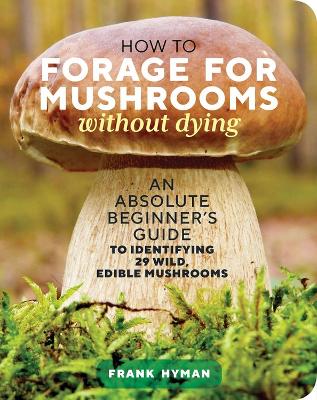Reviewed by annieb123 on
How to Forage for Mushrooms without Dying is a well written and clear field guide to foraging 29 edible mushrooms written by Frank Hyman. Due out 12th Oct 2021 from Storey, it's 256 pages and will be available in paperback and ebook formats.
This is a layman accessible guide to foraging mushrooms and includes what to look for and (just as importantly) what to avoid. Additionally, it presents the information in an appealingly direct way with a lot of humor and definitely doesn't take itself to seriously.
The book's introduction covers what mushrooms are botanically, the different types of fungi to be found and how they interact with their environment as well as what types of trees they grow with/on, identifying structures, and how and where to find them (without dying). There is a definite emphasis on safety in identifying, handling, storing, using, and eating the foraged fungi. It actually contains one of the better food safety discussions I've seen.
Graphically the book is full of clear color photos which will help with ID and location. The field guide sections contain many color photos of each species including closeups and at different stages of development. The author also does a good job of explaining the *differences* between look-alike species to help with positive ID to sort out the edible ones from the harmful ones. Each entry includes the name, the binomial (Latin) name (including an English translation of the Latin), common name(s), identifying descriptions, look-alikes, and uses including some taste descriptors.
Five stars. Witty and useful, with clear and specific directions. This would be a good selection for library acquisition, smallholders, self-sufficiency folks, gardening and foraging readers, and similar.
Disclosure: I received an ARC at no cost from the author/publisher for review purposes.
Reading updates
- Started reading
- 6 September, 2021: Finished reading
- 6 September, 2021: Reviewed
